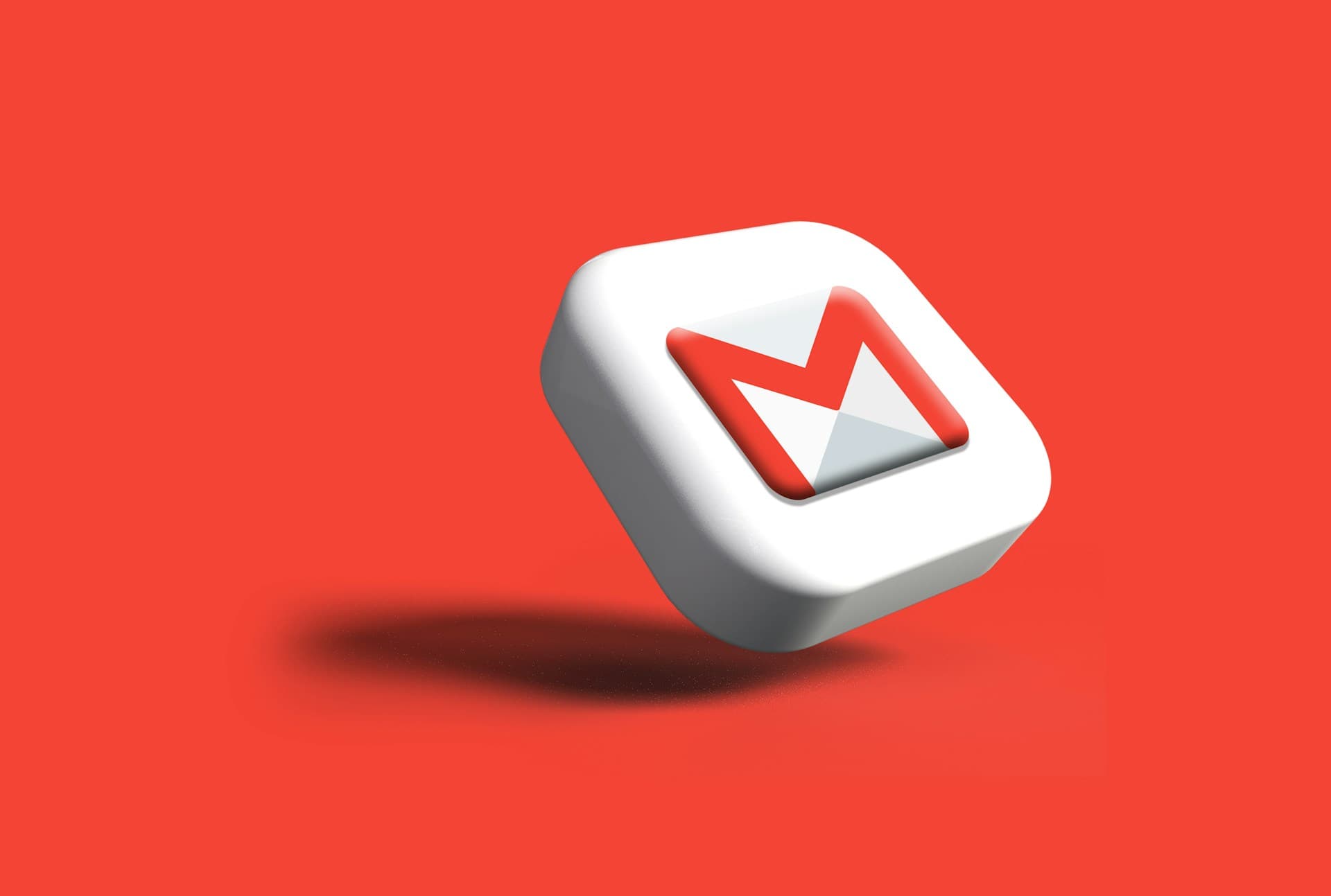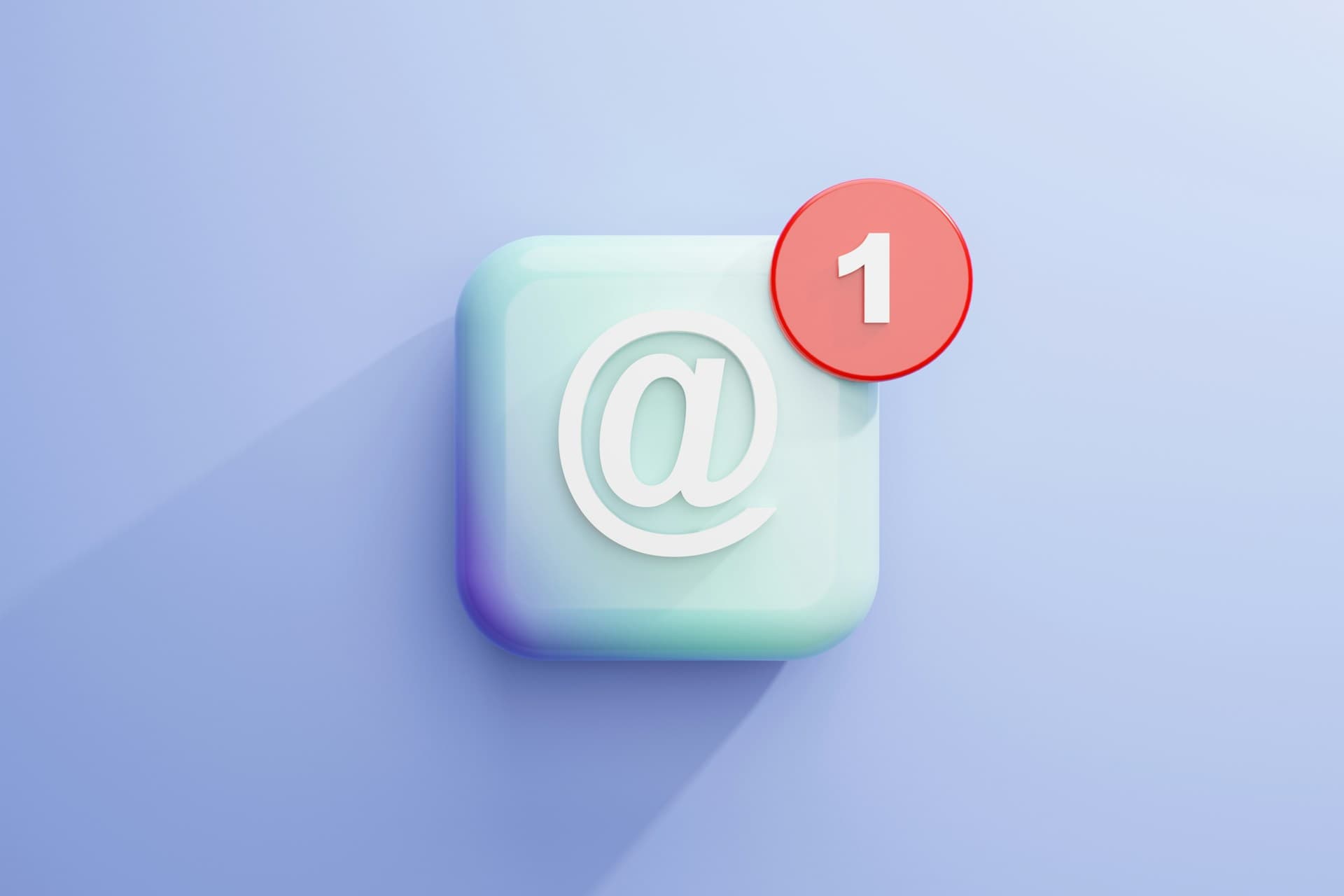How to write a professional email: complete guide + examples

You've rewritten the same email three times. The tone still feels off. You're not sure if you sound too formal or too casual. Should you use "Hi" or "Hello"? Should you get straight to the point or warm up with small talk?
Writing professional emails shouldn't be this stressful.
The truth is, professional email writing follows a simple formula. Once you know the structure, tone, and common pitfalls to avoid, you can write clear, effective emails in minutes instead of agonizing for half an hour.
In this guide, you'll learn exactly how to write professional emails that get read, get responses, and make you look good. Need ready-to-use templates? Check out our professional email templates. Let's dive in.
Why professional email writing matters
Email is still the primary business communication tool. The average office worker receives 121 emails per day and sends about 40. That means your email needs to stand out and communicate clearly — or it gets ignored.
Professional emails:
Build your reputation and credibility
Get faster, better responses
Avoid misunderstandings and confusion
Show respect for the recipient's time
Open doors to opportunities
On the flip side, poorly written emails can damage relationships, waste time, and make you look unprofessional. It's worth learning how to do it right.
The anatomy of a professional email
Every professional email has the same basic structure. Master this and you'll never stare at a blank email again.
1. Subject line
Your subject line determines whether your email gets opened. Make it clear, specific, and concise.
Good subject lines:
"Meeting request: Discussing Q1 marketing strategy"
"Question about Friday's deadline"
"Following up on our conversation at Tech Summit"
"Proposal for website redesign project"
Bad subject lines:
"Quick question" (too vague)
"Important!!!" (feels spammy)
"Re: Re: Re: Re: Project" (confusing)
No subject line at all
Pro tip: Keep subject lines under 50 characters. They get cut off on mobile otherwise.
2. Greeting
Your greeting sets the tone. Match the formality to your relationship with the recipient.
Formal greetings (clients, executives, first contact):
"Dear Mr./Ms. [Last Name],"
"Hello Dr. [Last Name],"
"Good morning/afternoon [Name],"
Professional but friendly (colleagues, regular contacts):
"Hi [First Name],"
"Hello [First Name],"
"Hey [First Name]," (if your workplace is casual)
Group emails:
"Hi team,"
"Hello everyone,"
"Hi all,"
Avoid: "To whom it may concern" (feels impersonal), "Dear Sir/Madam" (outdated), no greeting at all
3. Opening line
Your opening line should immediately establish context or build rapport.
For first contacts:
"I'm reaching out because..."
"We met briefly at [event] and..."
"[Mutual contact] suggested I connect with you about..."
For follow-ups:
"Following up on our conversation about..."
"I wanted to circle back on..."
"Per our last discussion..."
For colleagues:
"I hope you're doing well."
"Hope you had a good weekend."
"Thanks for your email about..."
4. Email body
This is where you communicate your main message. Keep it clear, concise, and organized.
Best practices:
Put the most important information first
Use short paragraphs (2-3 sentences max)
Use bullet points for lists or multiple items
Bold key information if necessary
Stick to one topic per email when possible
Example structure:
[Opening line]
[Main point or request - be direct]
[Supporting details or context]
[Next steps or call to action]
5. Closing
End with a clear call to action or next step.
Good closings:
"Let me know if Friday works for you."
"Please send me the updated report by EOD Thursday."
"I'll send the proposal by Monday. Feel free to reach out with questions."
"Looking forward to your feedback."
Vague closings to avoid:
"Let me know your thoughts." (About what specifically?)
"Talk soon." (When? About what?)
"Thanks in advance." (For what action?)
6. Sign-off
Choose a professional sign-off that matches your tone.
Professional sign-offs:
"Best," or "Best regards,"
"Thanks," or "Thank you,"
"Sincerely,"
"Warm regards,"
"Cheers," (casual workplaces)
Follow your sign-off with:
Your full name
Your title (if relevant)
Contact information (optional but helpful for external emails)
10 examples of professional emails
Example 1: Requesting a meeting
Subject: Meeting request: Discussing Q2 marketing strategy
Hi Sarah,
I hope you're doing well. I wanted to touch base about our Q2 marketing strategy and get your input on a few campaign ideas.
Would you be available for a 30-minute call next week? I'm flexible on timing and happy to work around your schedule.
Let me know what works best for you.
Thanks,
Alex
Example 2: Following up on a previous email
Subject: Re: Website redesign proposal
Hi Michael,
I wanted to follow up on my email from last Tuesday about the website redesign proposal. I know you're busy, so I wanted to make sure it didn't get buried.
Have you had a chance to review it? I'm happy to schedule a call to discuss any questions.
Thanks,
Jessica
Example 3: Introducing yourself
Subject: Introduction — Alex Chen from Acme Corp
Hi David,
I'm Alex Chen, Marketing Director at Acme Corp. I came across your article on content marketing strategies and found your insights really valuable.
I'm reaching out because I'm working on a similar project and would love to get your perspective. Would you be open to a quick 15-minute call sometime next week?
No pressure if you're too busy. Either way, thanks for the great content!
Best,
Alex
Example 4: Saying thank you
Subject: Thank you for yesterday's meeting
Hi Lisa,
Thank you for taking the time to meet yesterday. I really appreciated your insights on the product roadmap, especially your thoughts on user research.
As discussed, I'll send you the updated timeline by Friday. Please let me know if you need anything in the meantime.
Thanks again,
Mark
Example 5: Apologizing for a mistake
Subject: Apologies for the error in yesterday's report
Hi Tom,
I wanted to reach out and apologize for the error in the Q3 report I sent yesterday. The numbers in section 3 were outdated.
I've attached the corrected version. I've also implemented a double-check process to prevent this from happening again.
I'm sorry for any confusion this caused. Please let me know if you have any questions.
Best regards,
Emily
Example 6: Requesting information
Subject: Quick question about the client onboarding process
Hi Rachel,
I'm working on the new client onboarding guide and could use your help with a few details about your team's process.
Specifically, I need to know:
What documents you send to new clients
Timeline for the first check-in
Who handles technical setup
Would you be able to send this info by Thursday? Happy to jump on a quick call if that's easier.
Thanks,
Chris
Example 7: Declining a request politely
Subject: Re: Speaking engagement at Tech Conference
Hi Jennifer,
Thank you so much for thinking of me for the Tech Conference panel. I'm honored by the invitation.
Unfortunately, I'm not going to be able to participate due to prior commitments that week. I'd love to stay in touch for future opportunities, though.
Best of luck with the conference — I'm sure it will be great!
Best,
Brian
Example 8: Sharing an update
Subject: Project update: Website launch on track for Monday
Hi team,
Quick update on the website launch: we're on track for Monday, October 15th.
Completed this week:
Final design review ✓
Content migration ✓
QA testing ✓
Still to do:
Final stakeholder approval (Friday)
DNS changes (Sunday night)
Let me know if you have any questions or concerns.
Thanks,
Amy
Example 9: Making a request
Subject: Request for budget approval: New marketing tools
Hi Karen,
I'd like to request approval for two new marketing tools that would help us scale our content production:
SEO platform: $199/month
Social media scheduler: $49/month
Total: $248/month
These tools would save our team approximately 10 hours per week and improve our SEO rankings.
I've attached a detailed proposal with ROI projections. Would you be able to review it by Friday?
Thanks,
Daniel
Example 10: Confirming details
Subject: Confirming our meeting on Thursday at 2pm
Hi Steve,
Just confirming our meeting scheduled for Thursday, October 12th at 2pm EST to discuss the Q4 sales strategy.
Agenda:
Review Q3 results (15 min)
Discuss Q4 goals (20 min)
Plan team training (10 min)
I'll send a calendar invite with the Zoom link.
See you then!
Best,
Lauren
💡 Stop writing emails from scratch. Quickfix AI reads your emails and generates contextual, professional responses instantly. Try it free →
Professional email writing best practices
1. Get to the point quickly
Busy people skim emails. Put your main point or request in the first paragraph. Save context and details for later.
Bad: "I hope you're doing well. How was your weekend? The weather has been great lately. Speaking of which, I wanted to ask..."
Good: "I hope you're doing well. I need your feedback on the marketing proposal by Friday. Here's what I need..."
2. Use simple, clear language
Professional doesn't mean complicated. Avoid jargon, buzzwords, and unnecessarily formal language.
Overly formal: "I am writing to inquire as to whether or not you might be available..."
Better: "Are you available for a call next week?"
3. Proofread before sending
Typos and grammatical errors undermine your professionalism. Always read your email once before clicking send.
4. Use bullet points and formatting
Large blocks of text are hard to read. Use bullet points, numbered lists, and short paragraphs to make your email scannable.
5. Match the recipient's tone
If they're formal, be formal. If they're casual, you can be casual too. Mirror their communication style.
6. Respond within 24 hours
Even if you don't have a full answer, acknowledge the email and let them know when you'll respond fully.
7. Be specific with requests
Don't say "let me know your thoughts." Say "can you review this by Friday and send me your feedback on sections 2 and 3?"
8. Use "Reply All" carefully
Only use "Reply All" when everyone on the thread needs to see your response. Otherwise, reply directly.
How Quickfix AI helps
Even with a formula, writing professional emails takes time. You have to think about structure, tone, wording, and context. That's where AI can help.
Instead of:
❌ Spending 10-15 minutes writing each email
❌ Rewriting the same email three times
❌ Second-guessing your tone and wording
❌ Staring at a blank screen not knowing how to start
With Quickfix AI:
✅ AI reads the email you're replying to
✅ Generates a professional, contextual response
✅ Matches your tone (professional, casual, friendly)
✅ Ready to send in seconds
Quickfix AI works directly in Gmail, Outlook, and any email platform. No copying, pasting, or switching tabs. Just click once and send. Learn more about AI reply generators.
Common email writing mistakes to avoid
1. Writing emails that are too long
If your email is longer than 200 words, it's probably too long. Keep it concise. If you need to share a lot of information, attach a document instead.
2. Burying the main point
Don't make people scroll to find out what you want. Lead with your request or main point.
3. Using vague subject lines
"Quick question" doesn't tell them anything. "Question about Friday's sales meeting agenda" tells them everything.
4. Forgetting a call to action
What do you want them to do? Make it clear. "Please confirm by Wednesday" is better than "Let me know."
5. Being too casual (or too formal)
Match the formality to your relationship and industry. Tech startups are casual. Law firms are formal. Read the room.
6. Overusing exclamation points
One exclamation point is fine. Three exclamation points looks unprofessional!!!
7. Not proofreading
Always read your email once before sending. Typos make you look careless.
8. Using unclear pronouns
Instead of "I discussed this with them and they said it's fine," specify who "them" and "they" are.
Pro tips for better professional emails
Write like you talk: If you wouldn't say it out loud, don't write it. Keep it natural.
Use active voice: "I'll send the report" is clearer than "The report will be sent."
One email, one topic: Mixing multiple topics in one email leads to things getting missed.
Use the "24-hour rule" for emotional emails: If you're upset, write the email but don't send it. Wait 24 hours and revise with a clear head.
CC sparingly: Only CC people who genuinely need to see the email.
Use BCC for mass emails: This protects everyone's privacy and prevents "Reply All" disasters.
Include context in replies: Don't assume they remember your last email from 3 weeks ago. Include a quick reminder.
End with appreciation: "Thank you for your time" or "I appreciate your help" goes a long way.
FAQs
How long should a professional email be?
Keep professional emails under 200 words when possible. If you need more space, consider attaching a document or scheduling a call instead.
Should I use "Dear" or "Hi" in professional emails?
It depends on formality. Use "Dear" for very formal situations (first contact with executives, clients). Use "Hi" for most professional communications with colleagues and regular contacts.
Is it okay to use emojis in professional emails?
It depends on your workplace culture and relationship with the recipient. When in doubt, leave them out. They're generally fine for casual internal emails but not for client communications.
How quickly should I respond to professional emails?
Aim to respond within 24 hours. If you need more time for a full response, send a quick acknowledgment email: "Got your email. I'll send a full response by Friday."
What should I do if I sent an email with a mistake?
If it's a minor typo, you can usually let it go. If it's a significant error, send a follow-up email: "Quick correction on my last email — [correct the mistake]. Apologies for the confusion."
Can I use AI to write professional emails?
Yes. AI tools like Quickfix AI can write professional emails based on context. They save time and help you communicate more effectively, especially for routine emails. Check out our email templates and guide to the best AI writing assistants.
Should professional emails be formal or casual?
It depends on your relationship with the recipient and your industry. Match their tone. If they're casual, you can be casual. If they're formal, stay formal.
How do I end a professional email?
Common professional sign-offs include "Best," "Best regards," "Thanks," "Thank you," or "Sincerely." Choose one that matches your tone and relationship with the recipient.
Conclusion
Writing professional emails doesn't have to be complicated. Follow the basic structure (clear subject line, appropriate greeting, concise body, specific closing), keep it simple, and proofread before sending.
The more you practice, the faster and easier it gets. Soon, you'll be writing clear, professional emails in minutes instead of agonizing over every word.
And if you want to save even more time? Let AI handle it. Quickfix AI reads your emails, understands the context, and generates professional responses automatically — so you can focus on more important work.
Ready to try Quickfix AI for email?
See how Quickfix AI helps you respond to emails faster

